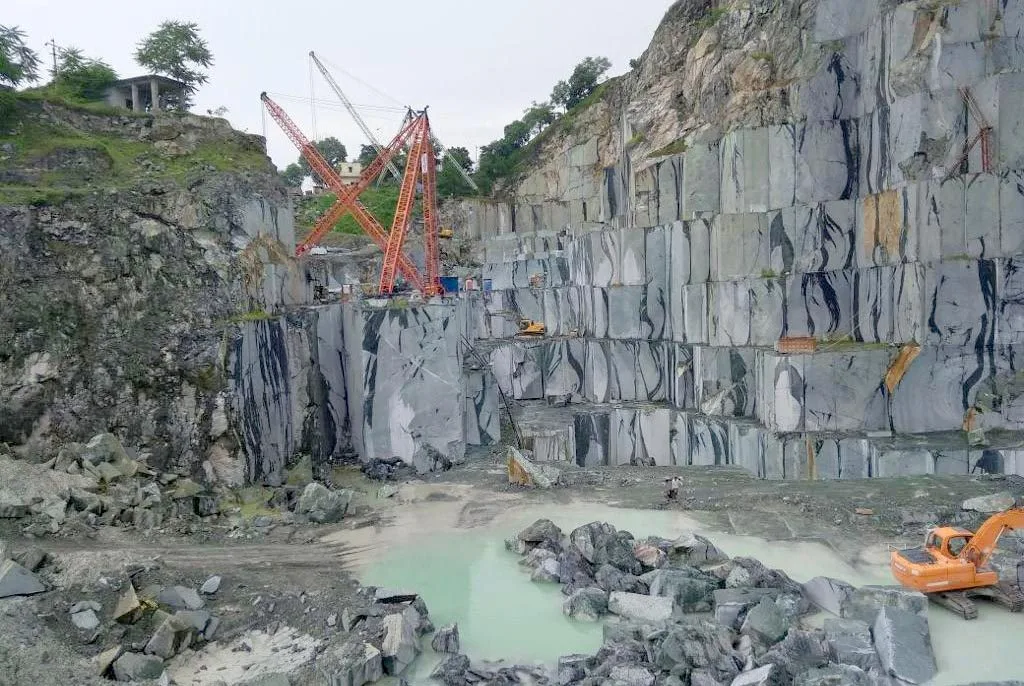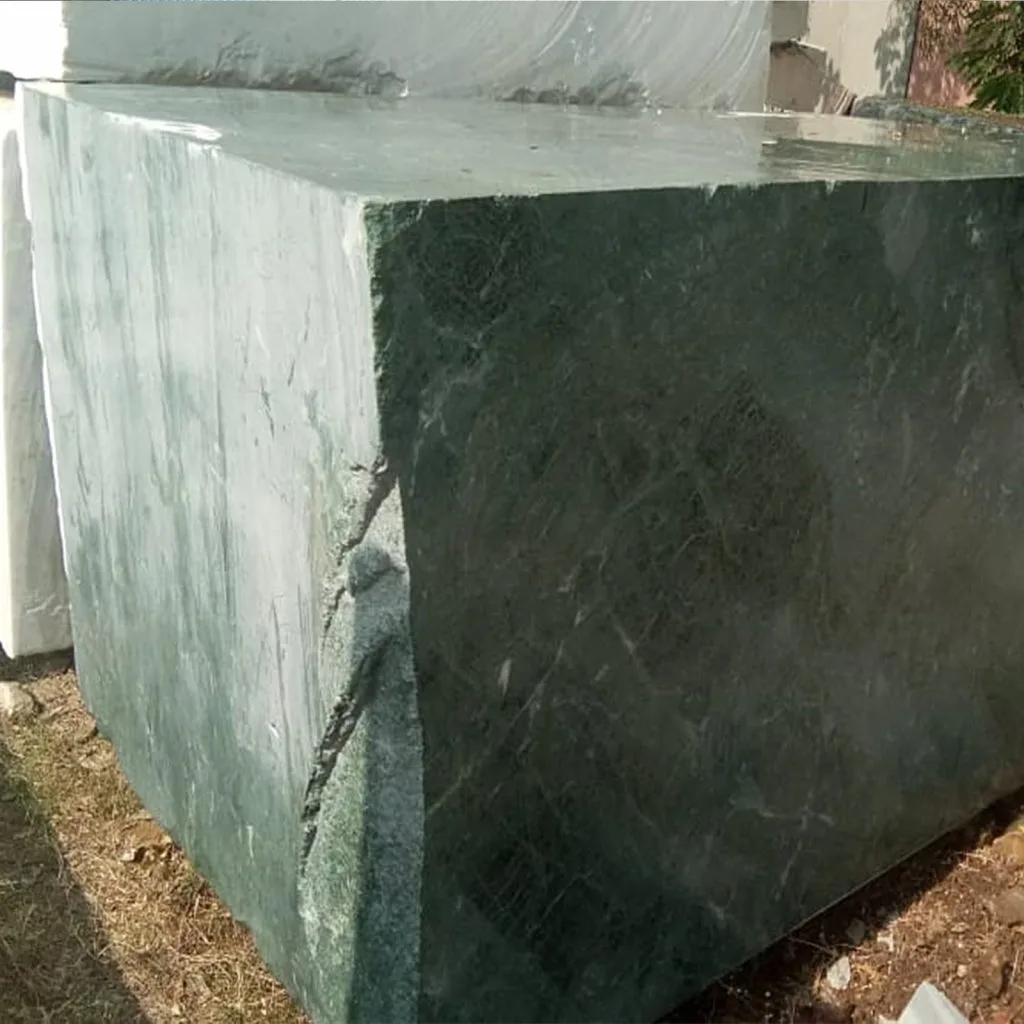Whenever it comes to choosing from a wide range of natural stones for flooring purposes, marble emerges on the top among architects, homeowners, construction experts, and others. The first and foremost reason is the visual characteristics that lend it a distinctive appearance. Marble can be found in various parts of the world. However, Indian marble is known to be of superior quality and Indian marble suppliers provide a wide range of products for various applications.
According to a recently published report, Global Marble Industry is expected to grow USD 68790 million by the year 2026, from USD 57270 million In 2020, at a CAGR of 3.1%.
Just like the complex details of marble stone, its extraction and process are also interesting. In this post, you will get to know everything about marble extraction and marble processing.
In general, marble deposits can be found in open quarries. There can be 95% in the form of open quarries and 5% in the form of mines or caves. Marble is found at the ground level or at high depths which adds up to the high cost of stone removal. In earlier times, marble extraction was mainly done using manual processed. The commonly used tools were wooden wedges, ropes, halters, shovels, and picks.

In the present context, marble quarry owners make use of advanced machinery and explosives. These explosives are meant to separate the mable from the blocks and rubble.
There are primary three stages of the marble process – its extraction, sawing, and polishing.
All these processes play a vital role in ensuring the delivery of high-quality marble slabs and tiles. Here, it is important to mention that the processing of marble is extremely complex and takes longer days for the final product to come.
Stages of Marble Processing

Marble Quarrying
The extraction of marble is done at the quarries in the stony massifs. To ensure effectual tracing and carriage operations, experts with multiple years of expertise and highly advanced equipment are put to work. The pre-extraction setting also includes arrangements for safety and protection.
The foremost objective of marble suppliers is to get marble blocks of specific height and width. These blocks can be transferred to various marble processing units for further treatment. The most common steps in a marble quarrying activity are:
Determining a quarry site
In India, most of the marble quarries are located either in North India or South India. There are various stone characteristics that remain limited to a particular marble quarry like color, pattern, and quality. Once a quarry location is determined, the next step is to take a sample to determine the exact color and characteristics. Once all the necessary approvals are sought, quarrying operations are commenced.
Drilling
In the next step, pneumatic steel drillers and down-the-hole drillers are used to drill the marble rocks. The former machine is used to do vertical, horizontal, and inclined drilling whereas the latter equipment is used for making vertical holes.
Primary Cuts
Doing primary cuts is the next step for cutting giant-size marble blocks via a vertical hole drilling method. These marble blocks are obtained using the diamond wire machine.
Hydraulic Cushions
In the next stage, steel pushing bags are put in the gaps between primary cuts.
Lifting and Carrying
The last step followed in marble quarrying is to lift and transport the big marble blocks to various processing units. The use of heavy-duty cranes is quite common for carrying raw, big blocks and loading them on trucks.
Marble Processing in Factory
Once the marble blocks reach the marble processing unit, the next level of processing is done at the factory. The two major tasks that are executed here are unloading of marble blocks and their cutting.
Unloading
The process of unloading large marble blocks in a factory is done by a Gantry crane. This big-size crane is a heavy-duty crane that picks the marble blocks from the truck and places them in the factory.
Multiwire Cutting
After the marble blocks are offloaded from the trucks, specialized machines like multi-wire cutting machines are used to cut these blocks in the form of slabs.

Other processes done at the factory stage are:
- Marble block washing with water
- Cutting of marble to carve out gangsaw slabs, cutter slabs, and tiles
- Stone slab and tile drying
- Edging to make slabs application-worthy
- Polishing to get a cleaner and smoother marble surface
- Finishing as per buyer’s requirements
- Stone storage at the stockyard
- Multi-level marble quality control
Marble Sizes
The most commonly processed sizes of marble stone by Indian marble suppliers are:
TILES 30×30, 30×60, 60×60 CM
GANGSAW 260 X 160 CM
CUTTER SLAB 180 X 60 CM
ROUGH BLOCKS – 300-320 x 130-165 x 160-205 cm and weight 23-29 tons

Marble Polishing
Now, comes the most important part of marble processing – marble polishing. There are different types of finishes that can be done on marble surfaces like – leather, honed, Lepatora, polished, brushed, bush-hammered, and antique.
The purpose of marble polishing by marble suppliers is to make the marble surface smoother and usable for various applications. Be it flooring, wall cladding, countertops, or any other application, it is the surface finish that adds value to the overall marble experience. Both hand-held and mechanized tools are used to polish the marble slabs.
The Conclusion
Due to its excellent heat resistance and low maintenance requirements, marble always remains a favorite choice among architects, construction contractors, builders, and homeowners.
